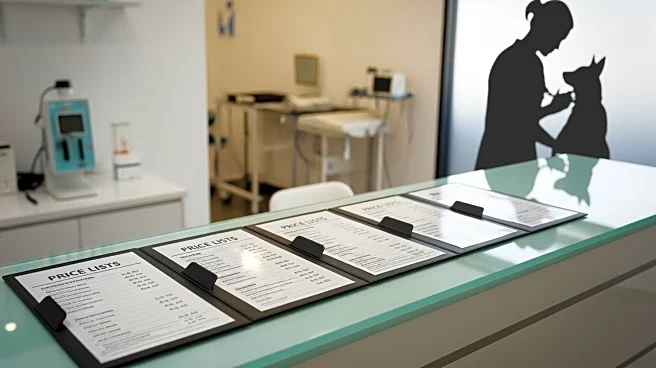What's Happening?
The UK's Competition and Markets Authority (CMA) has recommended that veterinary practices be required to publish price lists and disclose ownership details to enhance transparency and competition in the
sector. This follows an investigation into the veterinary industry, which revealed that prices have increased by 63% over seven years, nearly double the rate of inflation. The CMA found that practices owned by large vet groups charge 16.6% more on average than independent vets. The recommendations aim to address concerns that pet owners are often unaware of costs and are not provided with estimates for treatments, which can be expensive. The CMA's proposals include capping prescription fees, banning bonuses for specific treatments, and improving access to cheaper medicines online.
Why It's Important?
The CMA's recommendations are significant as they seek to address the rising costs of veterinary care, which have become a burden for many pet owners. By requiring vets to publish prices and disclose ownership, the proposals aim to increase transparency and allow consumers to make more informed decisions. This could lead to more competitive pricing and potentially lower costs for pet owners. The recommendations also highlight the need for regulatory reform in the veterinary industry, which has not kept pace with changes in the market. Improved transparency could enhance trust in the industry and ensure that pet owners are not overcharged for essential services.
What's Next?
The CMA's recommendations will need to be reviewed and potentially implemented by regulatory bodies and industry stakeholders. This may involve changes to existing regulations and the development of new guidelines for veterinary practices. The British Veterinary Association has expressed support for greater transparency but has raised concerns about the complexity of implementing comprehensive price lists. Further discussions and consultations will be necessary to address these concerns and ensure that the recommendations are effectively implemented.
Beyond the Headlines
The call for transparency in veterinary pricing reflects broader trends in consumer advocacy and the demand for accountability in service industries. As consumers become more informed and empowered, there is increasing pressure on businesses to provide clear and accessible information. This development also raises questions about the role of large corporate groups in the veterinary sector and the impact of consolidation on pricing and service quality. The recommendations could lead to a shift towards more consumer-friendly practices and greater scrutiny of industry standards.











